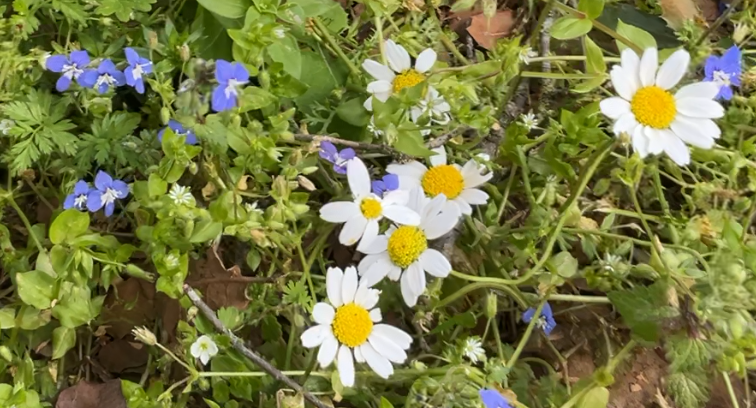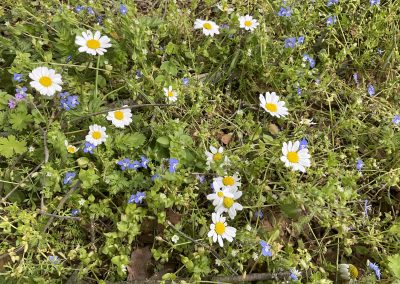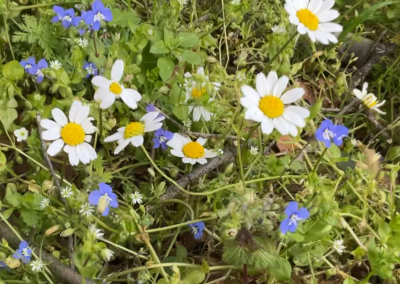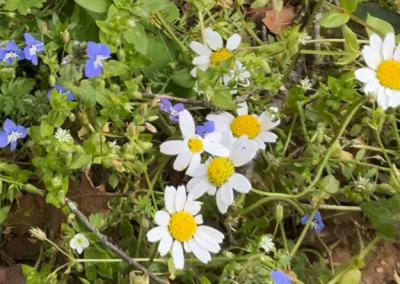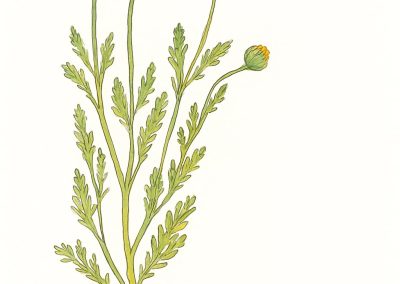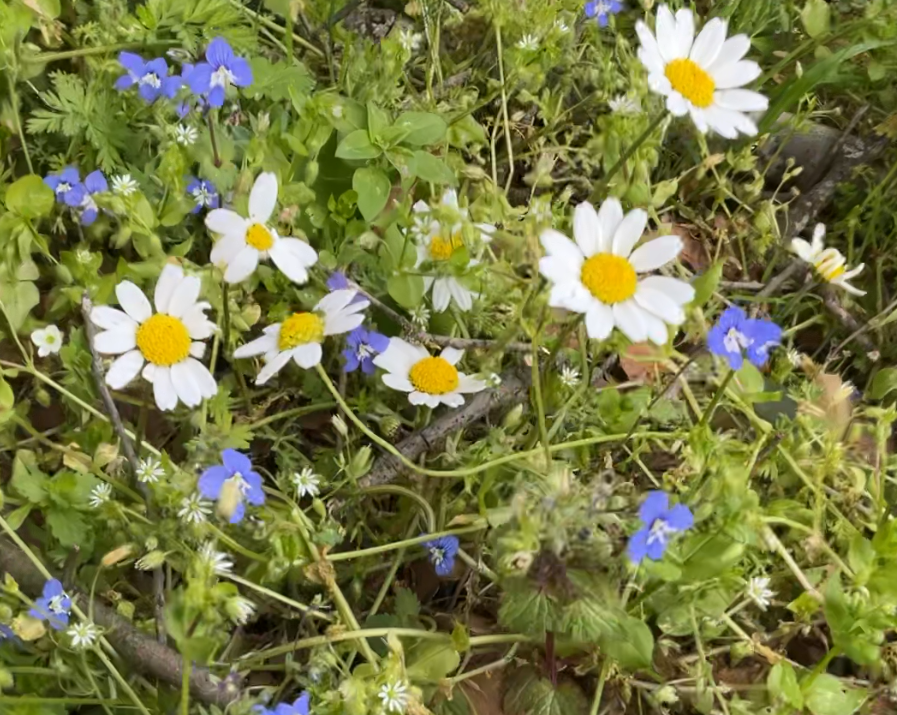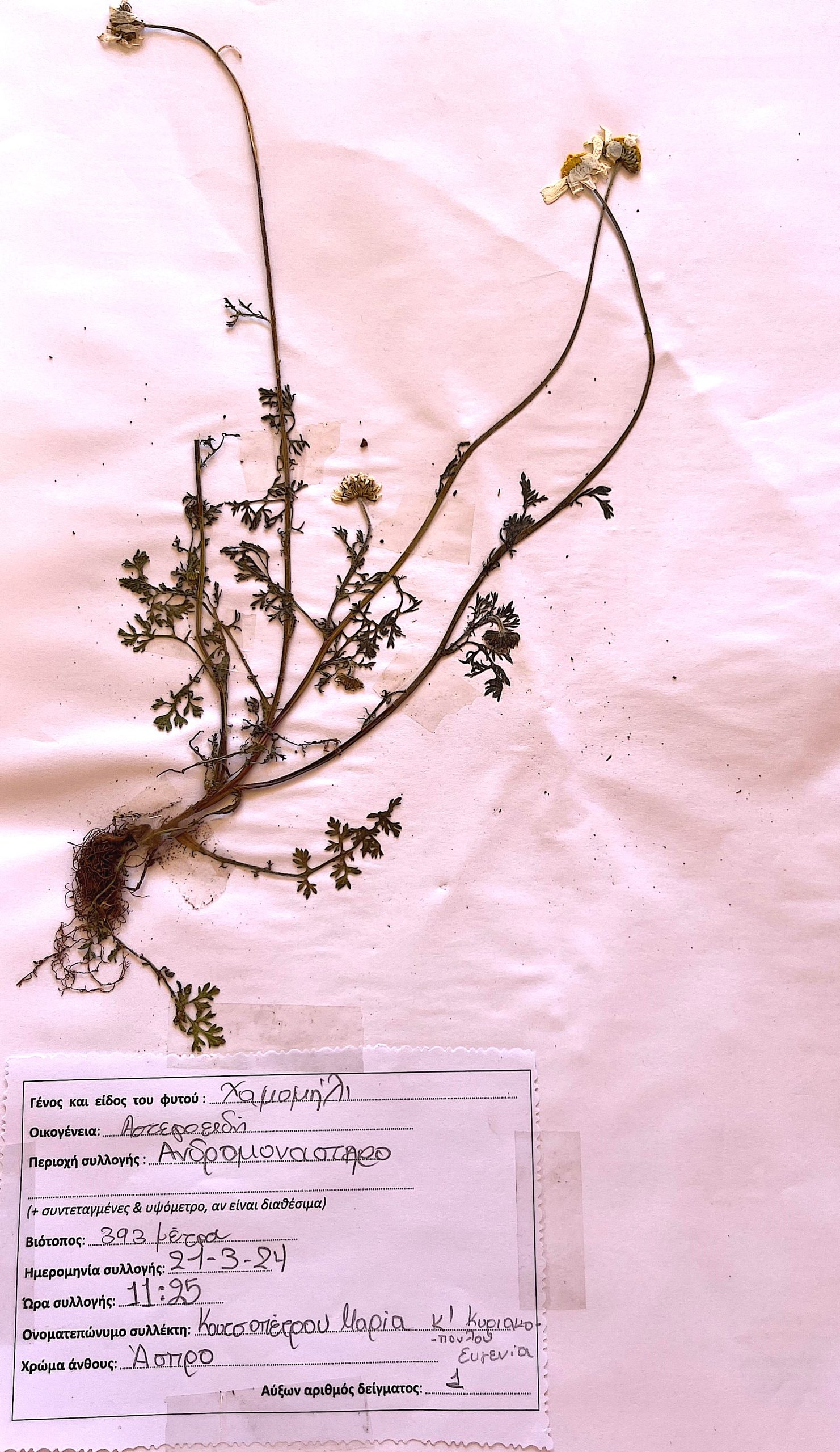Matricaria recutita chamomilla
Scientific description
Scientific name: Matricaria recutita
Kingdom: Plantae
Taxonomy: Magnoliophyta
Order: Dicotyledons, Asterales
Family: Composites (Asteraceae)
Genus: Matricaria
Species: Matricaria recutita
Common name: Chamomile
Origin:
Native to Europe and Asia. The name Matricaria comes from Latin "matrix", historically linked to gynecological uses. Greek "chamomile" (chamai = down, apple) reflects its apple-like aroma.
Description:
Flowers: Grows quickly, blooms in months; if late, forms rosette and blooms second year. White radial flowers and yellow tubular florets ~2 cm. Stems grow tall and stretch to the sun. Hollow receptacle at flower base is distinctive.
Leaves: Divided into thin linear segments, airy, feather-like.
Ecology:
Common in Greece, cultivated or bare fields, 0–800 m, rarely up to 1500 m.
Uses:
Medicinal plant with flavonoids, mucilages, polysaccharides, essential oil. Internal use: antispasmodic, sedative, digestive; external: skin inflammations, wounds, burns. Sedative, tonic, antiseptic, insecticidal, helps intestinal gases.
Remarks:
According to Christian tradition, dedicated to St. George.
Επιστημονική ονομασία: Ματρικάρια η περιτμημένη (Matricaria recutita)
Βασίλειο: Φυτά (Plantae)
Συνομοταξία: Αγγειόσπερμα (Magnoliophyta)
Ομοταξία: Δικοτυλήδονα (Magnoliopsida)
Τάξη: Αστερώδη (Asterales)
Οικογένεια: Σύνθετα (Asteraceae)
Γένος: Ματρικάρια (Matricaria)
Είδος: Matricaria recutita
Κοινή ονομασία: χαμομήλι
Καταγωγή:
Ιθαγενές είδος Ευρώπης και Ασίας. Το όνομα Matricaria από τα λατινικά "matrix", λόγω γυναικολογικής χρήσης. Το ελληνικό "χαμομήλι" από χαμαί (κάτω) και μήλο, λόγω αρώματος σαν μήλο.
Περιγραφή:
Άνθη: Αναπτύσσεται γρήγορα, ανθίζει σε λίγους μήνες, διαφορετικά σχηματίζεται ροζέτα και ανθίζει δεύτερο έτος. Λευκά ακτινωτά άνθη και κίτρινα σωληνοειδή ~2 εκ. Κάθε βλαστός ψηλώνει προς τον ήλιο. Κοίλο δοχείο στη βάση άνθους.
Φύλλα: Χωρισμένα σε λεπτά γραμμικά τμήματα, αέρινα, σαν πούπουλα.
Οικολογία:
Κοινό στην Ελλάδα, καλλιεργημένα ή χέρσα χωράφια, 0–800 μ., σπάνια έως 1500 μ.
Χρήση:
Φαρμακευτικό φυτό: φλαβονοειδή, βλεννώδη, πολυσακχαρίτες, αιθέριο έλαιο. Εσωτερικά: σπασμολυτικό, ηρεμιστικό, χωνευτικό. Εξωτερικά: φλεγμονές δέρματος, πληγές, εγκαύματα. Ηρεμιστικό, τονωτικό, αντισηπτικό, εντομοκτόνο, κατά των αερίων.
Σημείωση:
Αφιερωμένο στον Άγιο Γεώργιο κατά παράδοση.
Nom scientifique: Matricaria recutita
Règne: Plantae
Taxonomie: Magnoliophyta
Ordre: Dicotylédones, Astérales
Famille: Astéracées
Genre: Matricaria
Espèce: Matricaria recutita
Nom commun: Camomille
Origine:
Originaire d’Europe et d’Asie. Nom Matricaria du latin "matrix", utilisé pour problèmes gynécologiques. Grec "chamomile" = chamai (à terre) + mēlon (pomme) pour son parfum.
Description:
Fleurs: Croissance rapide, fleurit en quelques mois; sinon rosette et fleur deuxième année. Ligules blanches et fleurons tubulaires jaunes ~2 cm. Tiges s’élèvent vers le soleil. Réceptacle creux à la base.
Feuilles: Segments linéaires fins, aériennes, plumeuses.
Écologie:
Commune en Grèce, champs cultivés ou friches, 0–800 m, rarement 1500 m.
Utilisation:
Plante médicinale: flavonoïdes, mucilages, polysaccharides, huile essentielle. Infusion: antispasmodique, sédatif, digestif; usage externe: inflammations cutanées, plaies, brûlures. Calmante, tonique, antiseptique, insecticide, contre les gaz intestinaux.
Remarques:
Dédicace à Saint-Georges selon tradition chrétienne.
Denumire științifică: Matricaria recutita
Regn: Plantae
Taxonomie: Magnoliophyta
Ordin: Dicotiledone, Asterales
Familie: Compozite (Asteraceae)
Gen: Matricaria
Specie: Matricaria recutita
Denumire comună: Mușețel
Origine:
Specie nativă din Europa și Asia. Numele Matricaria din latinescul "matrix", folosit pentru probleme ginecologice. Denumirea grecească „mușețel” = chamai (jos) + măr, datorită aromei.
Descriere:
Flori: Crește rapid, înflorește în câteva luni; altfel rozetă și înflorește al doilea an. Flori radiale albe și tubulare galbene ~2 cm. Tulpini cresc spre soare. Receptacul gol la bază.
Frunze: Segmente liniare subțiri, aerisite, ca penele.
Ecologie:
Comun în Grecia, câmpuri cultivate și goale, 0–800 m, rareori 1500 m.
Utilizare:
Plantă medicinală: flavonoide, mucilagii, polizaharide, ulei esențial. Intern: antispastic, sedativ, digestiv; extern: inflamații, răni, arsuri. Sedativ, tonic, antiseptic, insecticid, ajută împotriva gazelor intestinale.
Observații:
Dedicat Sfântului Gheorghe conform tradiției creștine.
Creative writing inspired by Matricaria recutita chamomilla
Matricaria recutita — Chamomilla
In the ancient plains of Greece, there was a small village known for the beauty of its fields and the serenity of its landscapes. In this village lived a young woman named Chamalia, who was known for her kindness and calm nature. The villagers adored her, for she had the ability to bring peace and relief to anyone who came to her, whether they were sick or troubled.
Chamalia spent most of her time in the fields, gathering herbs and tending to the plants she found. She was a friend to all creatures of nature, often whispering songs to them to bring them comfort. One day, as she wandered through the hills, she heard a strange voice calling her from the depths of the forest. Following the voice, she arrived at a small meadow filled with tiny flowers with white petals and golden centers.
There, the goddess of health, Hera, appeared to her and said, "Chamalia, your kindness and love for both people and nature have not gone unnoticed. I wish to give you a gift that will help you bring even more peace and healing to those who need it. The plant you see here is chamomile. Its healing properties are invaluable, and its fragrance offers calm and relief to those who suffer. From today, you shall be the guardian of this plant."
Chamalia, touched by Hera's blessing, tended to the chamomile with great care. The villagers soon discovered the miraculous properties of the plant and used it to heal wounds, soothe the mind, and find relief from their daily worries. They drank chamomile tea and felt its warmth fill them with peace and well-being.
When Chamalia passed away, the villagers honored her memory each year by planting chamomile in their gardens and gathering its flowers to keep her legacy alive. The myth of Chamalia and the chamomile was passed down from generation to generation, and to this day, chamomile remains a symbol of peace, care, and healing.


